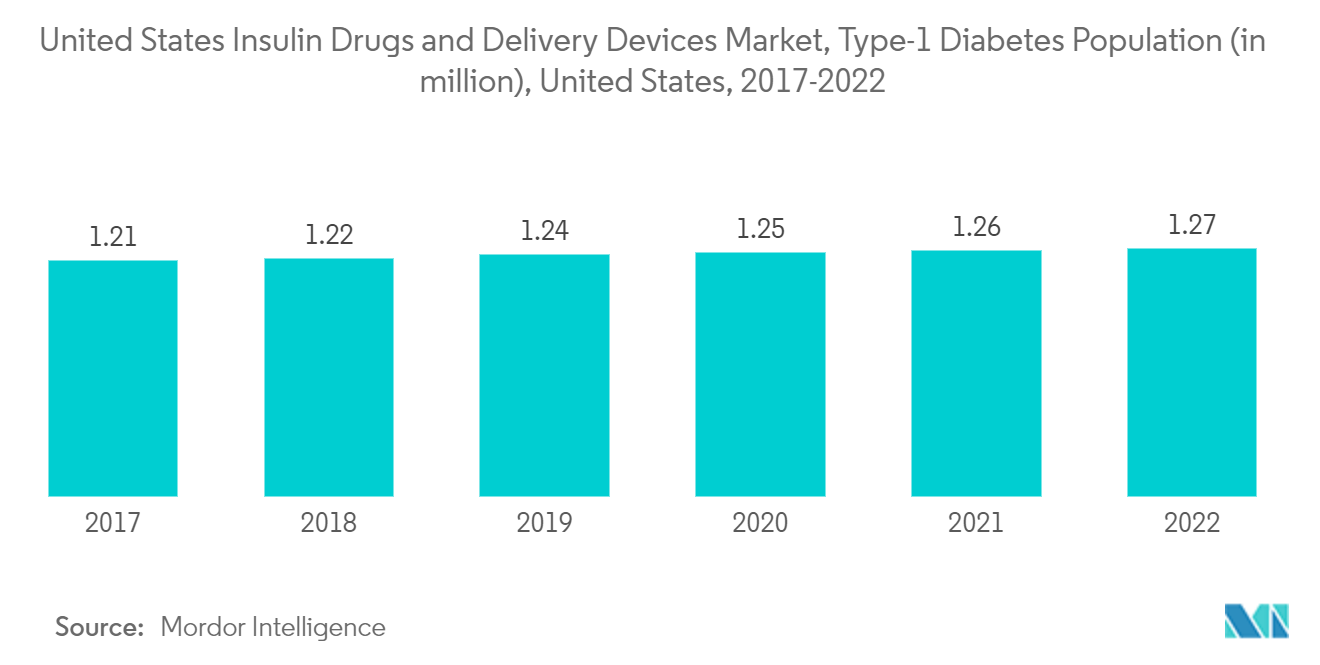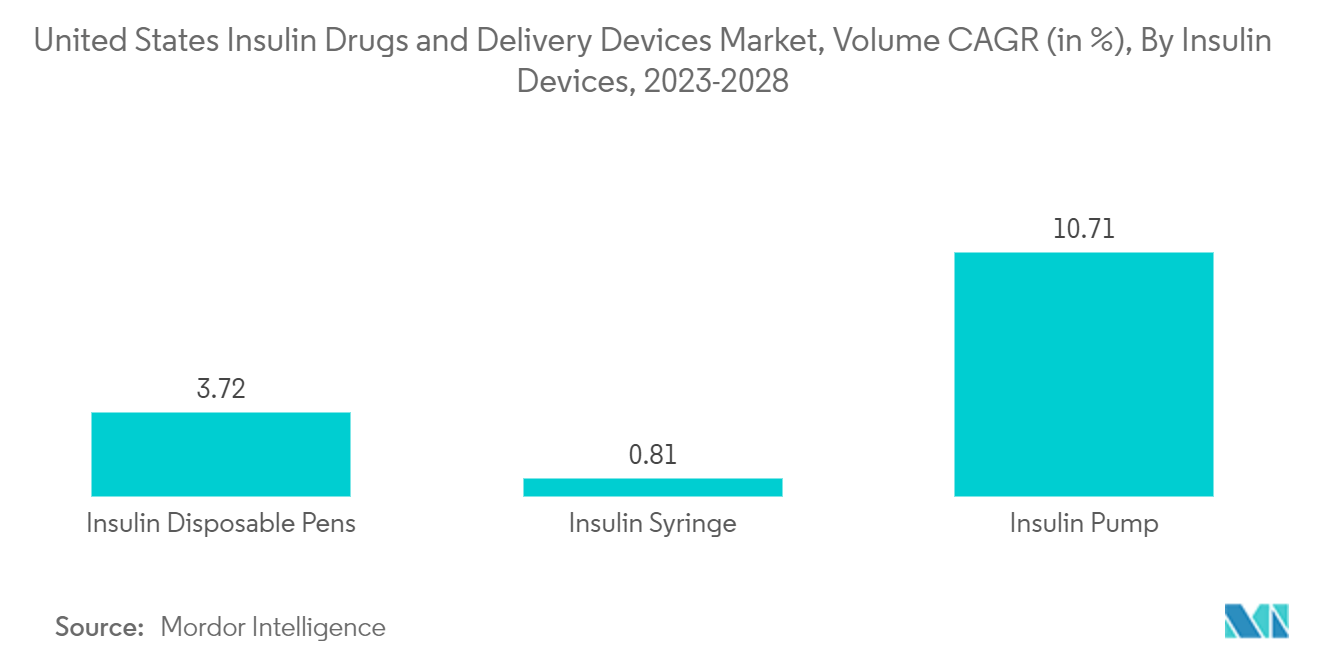Market Trends of United States Insulin Drugs And Delivery Devices Industry
Growing Diabetes and Obesity Population in the United States
In the United States, the prevalence of diabetes has increased dramatically during the last two decades, a fact driven by the increased prevalence of obesity and lifestyle changes. Diabetes ranks among the fast-growing chronic diseases in the United States. About 1.75 million US citizens are diagnosed with diabetes every year. The country also has the highest obese population, which is a prominent cause of Type 2 diabetes.
In the United States, there are several innovations by startups, like Glooko, OneDrop, Verily, Vacate, Insulet, Noom, Bigfoot Biomedical, Virta Health, and Diabeloop, Orgenesis, launched in the market. The market for diabetes care devices is expected to experience steady growth in the coming years due to the greater prevalence of obesity, owing to less physical activity, unhealthy food habits, and other lifestyle factors. The growing awareness among people regarding advanced diabetes devices is improving the adaptability to insulin devices. When blood glucose, commonly known as blood sugar, is too high, you get diabetes. It impacts around 37 million Americans, including adults and children. Diabetes has been related to several forms of cancer and can harm the heart, kidneys, nerves, eyes, and renal function. The body does not manufacture insulin in type 1 diabetes. Your body converts the carbs you consume into blood glucose (blood sugar), which it uses as fuel. Insulin is a hormone the body requires to transport glucose from the bloodstream to the body's cells. Everyone can learn to manage their disease and live long, healthy lives using insulin and other therapies.
Leading manufacturers focus on technological innovations and develop advanced products to gain a substantial market share. There has been a significant rise in insulin delivery systems technology, ranging from insulin injections to insulin pumps. Technological innovations and advancements offer many conveniences in maintaining blood glucose levels.
Therefore, owing to the increasing prevalence of diabetes, the market studied is anticipated to witness growth over the analysis period.

Insulin Pumps Segment is Expected to Witness Highest Growth Rate Over the Forecast Period
A tiny, wearable device called an insulin pump is used to provide insulin to your body. In addition to tracking your blood sugar levels, some pumps can connect with continuous glucose monitors as an alternative to frequent insulin injections. An insulin pump mimics the activities of a human pancreas. When the blood sugar level changes, the pancreas releases insulin. However, when an individual has diabetes, the body does not properly release or utilize insulin.
Insulin Pump held a major market share in the insulin delivery devices market in the current year and is expected to grow with a CAGR of more than 6.5% in the market during the forecast period because of the increasing technological advancement and its preference over other traditional methods due to continuous insulin administration. Insulin pump therapy is a well-established insulin administration method for people with type 1 diabetes (T1DM). Pumps are a validated, time-tested therapeutic option in T1DM at all ages, enabling near-physiological insulin delivery in situations where the pancreas does not produce insulin. There are even pump models with remote controls enabling parents of young children to either suspend or bolus insulin from a distance when the child is playing or eating. The insulin infusion pumps reduce the large swings in blood glucose levels, induce less pain, and deliver more accurately when compared to injections. These advantages of insulin pumps over the traditional delivery system are expected to boost the market.
Continuous subcutaneous insulin infusion (CSII or insulin pumps) and continuous glucose monitoring systems (CGMs) have improved patient care and quality of life and are widely used in the ambulatory setting. Increasingly, this technology is also being used in the hospital setting. The frequency of monitoring glucose levels depends on the type of diabetes, which varies from patient to patient. Type-1 diabetic patients need to check their blood glucose levels at regular intervals, monitor their blood glucose levels, and adjust the insulin dosing accordingly, which is likely to drive segment growth during the forecast period.


